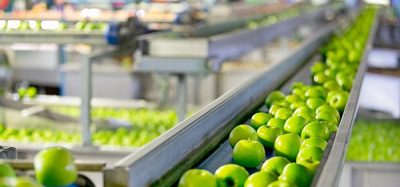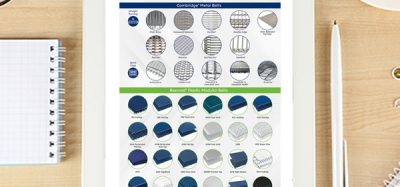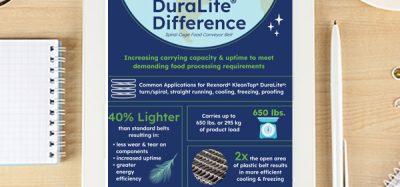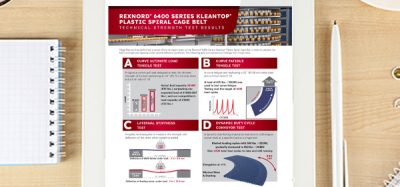Quick scan of hygienic processing brings understanding and improvements
- Like
- Digg
- Del
- Tumblr
- VKontakte
- Buffer
- Love This
- Odnoklassniki
- Meneame
- Blogger
- Amazon
- Yahoo Mail
- Gmail
- AOL
- Newsvine
- HackerNews
- Evernote
- MySpace
- Mail.ru
- Viadeo
- Line
- Comments
- Yummly
- SMS
- Viber
- Telegram
- Subscribe
- Skype
- Facebook Messenger
- Kakao
- LiveJournal
- Yammer
- Edgar
- Fintel
- Mix
- Instapaper
- Copy Link
Posted: 20 February 2009 | Erik Hoornstra & Jacques Kastelein, TNO Quality of Life | No comments yet
Hygiene is a key focal area among food industry companies. At a time when producers are beset by a whole range of issues, this area demands investment. Ideally, the required level of hygiene should be adjusted in respect to the other requirements in the area of product quality and preservation. TNO’s quick scan helps achieve improvements in hygienic production and demonstrate that there is profit in the investments!
Hygiene is a key focal area among food industry companies. At a time when producers are beset by a whole range of issues, this area demands investment. Ideally, the required level of hygiene should be adjusted in respect to the other requirements in the area of product quality and preservation. TNO's quick scan helps achieve improvements in hygienic production and demonstrate that there is profit in the investments!
Hygiene is a key focal area among food industry companies. At a time when producers are beset by a whole range of issues, this area demands investment. Ideally, the required level of hygiene should be adjusted in respect to the other requirements in the area of product quality and preservation. TNO’s quick scan helps achieve improvements in hygienic production and demonstrate that there is profit in the investments!
Mild preservation methods are paramount in producing products that look fresh and are of good quality. A key aspect of this is getting an optimal combination of product formulation (like the Aw or pH value) and processing conditions (like heating temperature). When mild preservation methods are chosen and a long shelf life is aimed for, hygiene becomes a more critical factor. A hygienically designed production line prevents contamination and failures. It is essential to have a good understanding of the microorganisms that may cause products to spoil and prevent this occurring in the susceptible parts of the production process.
A trend in food processing is to minimise the heat given to a product. This has huge benefits on quality parameters, such as colour, texture and flavour. Aseptic processing and packaging is often needed to prevent contamination and as a result guarantee food safety and shelf life.
Building a process line aseptically is costly and may not always be needed. A choice in process development is to accept some contamination in case an existing process line is built in such a way that recontamination is unavoidable. This may be due to the components, pumps and piping used, achieved CIP conditions or the cleanability of the filling machine. In such a case, it is essential to know the potential spoilage organisms and develop a preservation strategy against those organisms.
In the case of product contamination, yeasts and lactic acid bacteria are often the potential spoilage organisms in acidified food products (pH < 4.6). Growth can be inhibited by a combination of acids (low pH, type and concentration of acid) and water activity (salt, sugar, preservatives). The use of other antimicrobial compounds can be considered. Sorbate and benzoate are commonly used preservatives, but their presence is not always allowed by customers. It is to be expected that in the future, combinations of different antimicrobial compounds will inhibit potential spoilage organisms. These may be part of ingredients and act synergistically with acids. Finding the ideal preservation strategy is a matter of screening, challenge testing and validation.
Pasteurising acidified foods is very common practice. Although pasteurising the food in the package prevents recontamination, the heat damage to a product is still significant. Hot fill is a logic alternative. Because the preservation strategy (pH, Aw, etc) for these products is based on spore forming bacteria, other organisms that recontaminate the product are likely to spoil the product. Hot fill conditions should be controlled to prevent recontamination. Ideally, the heat from the product pasteurises the package and head space. From experience, it is known that failures can occur that are due to poor design of the hot fill process. Knowledge of the contamination sources, hygienic design and control measures are needed to successfully apply mild hot fill processes. The positive effect on product quality is significant and therefore this is an interesting optimisation.
Although hygienic design is expected to improve in the coming years in all food factories and therefore contamination will be minimised, it is believed that specific preservation strategies will be developed and improved. This is simply due to the fact that some contamination is difficult to prevent and existing (poor) process lines should still run for years.
Hygiene in relation to production time
Besides preventing contamination, hygienic improvements in a production line also provide potential significant cost reducing options. In order to cut costs, a simplified production process with long production runs is preferred.
Food companies are continuously looking for ways to optimise their production process in order to reduce processing costs. Cleaning and disinfection takes time and money, although it is necessary to reduce fouling and product contamination. It is the experience of TNO that the dominant critical factors in the processing line are not well known and as a result, the processing times and cleaning and disinfection protocols are a result of experience, trial and error. Few companies know how long a processing time can be maximally and what the risks are if processing times are exceeded. Opportunities are seen in the market to reduce processing costs by extended processing times.
Shorter and less frequent cleaning periods can significantly boost production time and increase capacity. Minimising the cleaning and disinfection process can only be done in case biofouling is controlled. Poor hygienically designed piping, couplings, valves, pumps and off course dead ends in the line result often in biofouling or even worse in resistant biofilms. The cleaning and disinfection procedures should be adequate in order to remove biofouling and inactivate microorganisms. Often, the cleaning and disinfection procedures are not validated. As a result, it is possible that the regime is not adequate or an overkill! The experience is that due to a lack of knowledge about the type of fouling and design of the process, the cleaning and disinfection procedures are not optimal. Reducing the cleaning time results in a significant increase in production capacity.
An additional benefit is that by efficient cleaning, less aggressive agents can be used or cleaning can be done at lower temperatures. These improvements are crucial in the maintenance of equipment, the environment and working conditions. Furthermore, the level of water consumption may be reduced significantly, also resulting in cost savings.
Quick Scan
The previous two paragraphs indicate clearly the benefits of an optimised hygienic design of a production process:
(i) minimise the contamination level, also in combination with the preservation strategy
(ii) maximise the production time, also in combination with the cleaning and disinfection procedures
In order to reach these objectives, TNO has developed ‘Quick Scan of hygienic processing’.
A quick-scan of a food production plant results in insight in the process conditions, the hygienic design of the plant and the process lines (current state-of-the-art), routing, zoning, air-handling, food product requirements and the control measurements according to HACCP and other relevant regulations. The results of the quick-scan show possible vulnerabilities and opportunities for optimisations resulting in cost savings.
In the quick scan, TNO uses a multidisciplinary approach of process engineering and microbiology. The critical points in the process line are identified related to the target microorganisms, adequate cleaning and disinfection procedures in combination with the hygienic design of process equipment or appendages.
For a closed processing line, a quick scan examines the processing conditions as well as the hygienic design, like equipment, components and ducts. The ‘Cleaning In Place’ procedure also comes under scrutiny: agents, concentrations, temperatures and fluid velocities in the pipes.
In a quick scan of an open processing line, the contamination sources, processing conditions, materials used and the cleaning procedures are examined. The aim for these companies is often to extend the shelf life.
Areas for improvement are quickly generated by the quick scans, but before these are put to use in practice, they must be validated. While this tends to occur too infrequently, it does provide greater certainty. Validation is done by challenge-testing with selected microorganisms. A product can be challenged in the case of raising the pH or lowering the preservation temperature. This validates the product stability; the growth or inactivation of certain microorganisms. A process can be challenged to validate cleaning, disinfection and pre-sterilising the process line and/or the aseptic zone of a filling line. Taking such an approach enables you to gain a better understanding of product and process design, and thus apply it more specifically. In other words, you identify the real problem, the microorganisms that are the cause, the contamination locations, the growth and the survival.
A systematic approach is used to achieve extended processing times with limited (re)contamination. This approach is both applicable to closed and open processing.
The most important steps to take are:
- Identification of relevant (spoilage) microorganisms
- Identification of contamination sources
- Tracing and tracking of relevant microorganisms in processing line
- Setting criteria for maximum allowed contamination in end product
- Assessment of growth, adaptation, biofilm formation of relevant microorganisms in processing lines: dependant on process parameters
- Setting criteria for the efficacy of cleaning and disinfection
- Assessment of the reduction of the relevant microorganisms in processing lines by cleaning and disinfection: dependant on cleaning and disinfection procedure
- Optimisation of process parameters and cleaning and disinfection procedure
- Validation of process optimisation
Product groups for which the scan has been performed over the past year include convenience meal components, sauces, candy and bakery.
Quick scan case: Aseptic filling lines
TNO has evaluated the hygienic design and processing conditions of filling lines for several food companies faced with the problem of excessive product contamination in the existing production process. The companies wanted to reduce the contamination to an acceptable level by improving the aseptic filling conditions. Initially, TNO examined the entire production process, including the processing of the raw materials and the heating process, also looking at how the various production areas were divided into ‘care’ zones and the corresponding air treatment. The cleaning conditions (CIP) were also reviewed. In evaluating the hygienic design of the processing line, TNO used the hygienic design requirements stated in the relevant European directives (EN 1672, EN/ISO 14159 and the EHEDG directives).
The TNO evaluation identified the following causes of product contamination:
- Heating of product was too low
- Insufficient pre-sterilisation of the aseptic zone in the filling process, leading to recontamination
- Cross-contamination during filling through the migration of contaminated water droplets, aerosols, condensation, etc.
- Inadequate cleaning of components in the aseptic zone of the filler, resulting in insufficient disinfection
The following actions were taken with regard to improving the above:
- Modification of the heating and pre-sterilisation process conditions
- Hygienic design of the filling equipment was improved (more accessible for cleaning)
- Aseptic zone of the filler was improved
- The cleaning and decontamination procedures were modified and optimised
After the companies had implemented these improvements, TNO carried out a final assessment. The improvements led to a substantial reduction in production losses for the companies.
New tools
In case conventional microbiological methods are limiting in research, TNO offers the possibility of using new and advanced ‘tools’. The tools are applied when the target microorganisms are not known or when the impact of processing and CIP conditions on growth, adaptation, biofilm, etc. is not known. TNO applies several molecular microbiological tools, such as genomotyping or mass sequencing techniques to be able to specifically identify the sources of contamination and investigate the environmental conditions that enable certain groups of microorganisms to survive. In addition, the conditions that contribute to the growth and resistance, also called fitness of microorganisms, are investigated by smart and fast screening methods. The general aim of these methods is that they are often culture independent and very specific. An innovation is the development of a tool for fast detection of process line contamination. This can be done by colouring specific bacteria, yeasts or spores. A living cell gives off a colour signal that could be read online!
Summary
A wide range of food companies have used TNO in the last few years to assist and advise them in the optimisation of the hygiene standard within their production plant. In addition, TNO has a long history in evaluating cleaning and disinfection products, advising manufacturers of components and equipment about hygienic design and testing new equipment against the EHEDG guidelines. By using a multi disciplinary approach, the cleaning and disinfection procedures and preservation process can be optimised using a dedicated hygienic processing and design regime.
The quality of a food product can be improved and production costs reduced by tuning the preservation method and hygiene. The two extremes are: (i) mild preservation combined with strict hygiene and (ii) hurdles of preservation options (acidification, lowering Aw, etc) combined with a less strict hygiene regime. An optimised hygienic design and production means there is less risk of contamination, efficient cleaning, less water consumption and longer production runs! The TNO quick scan method is quick to produce improvements and, therefore, benefits. The investment very soon pays for itself.








